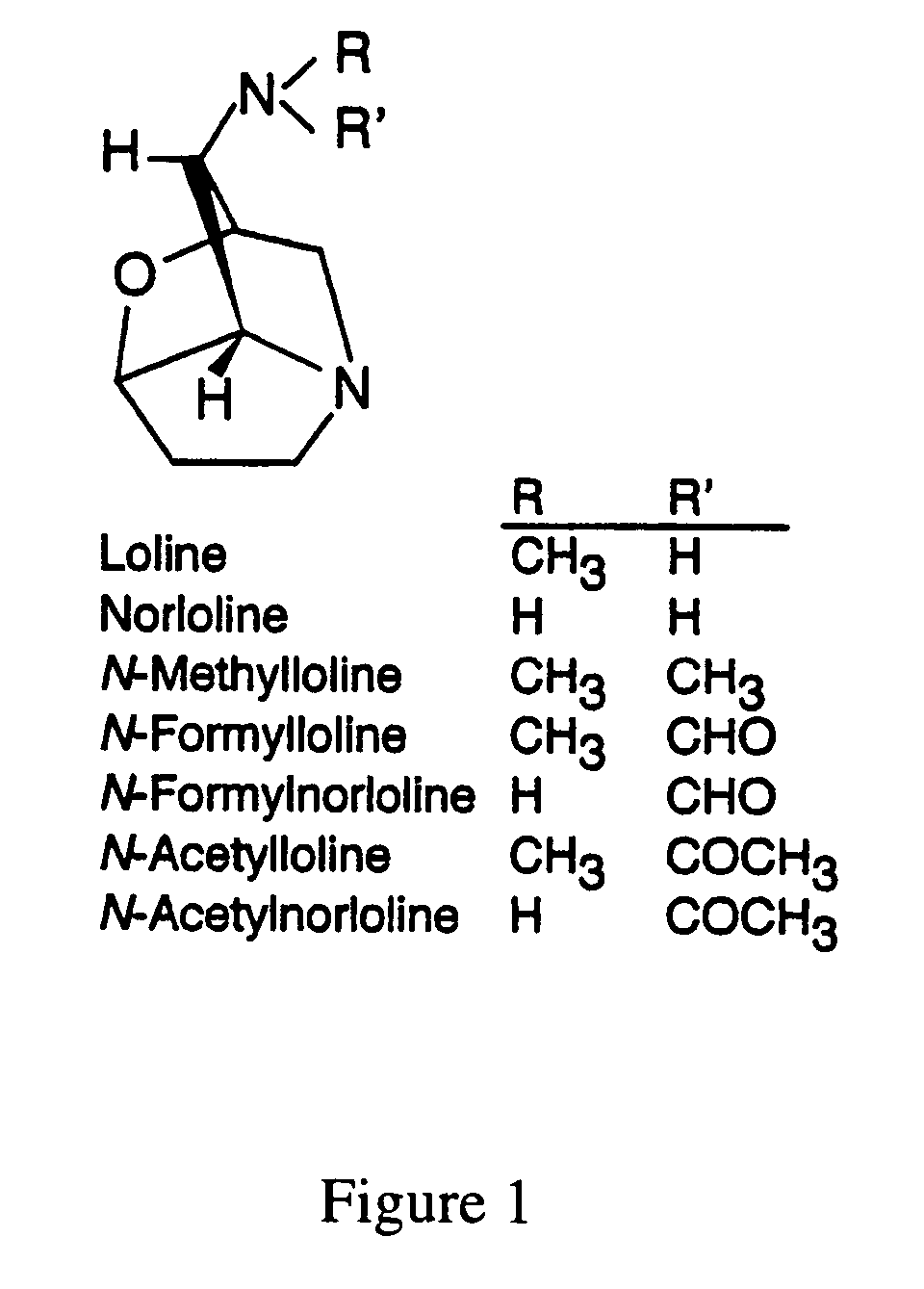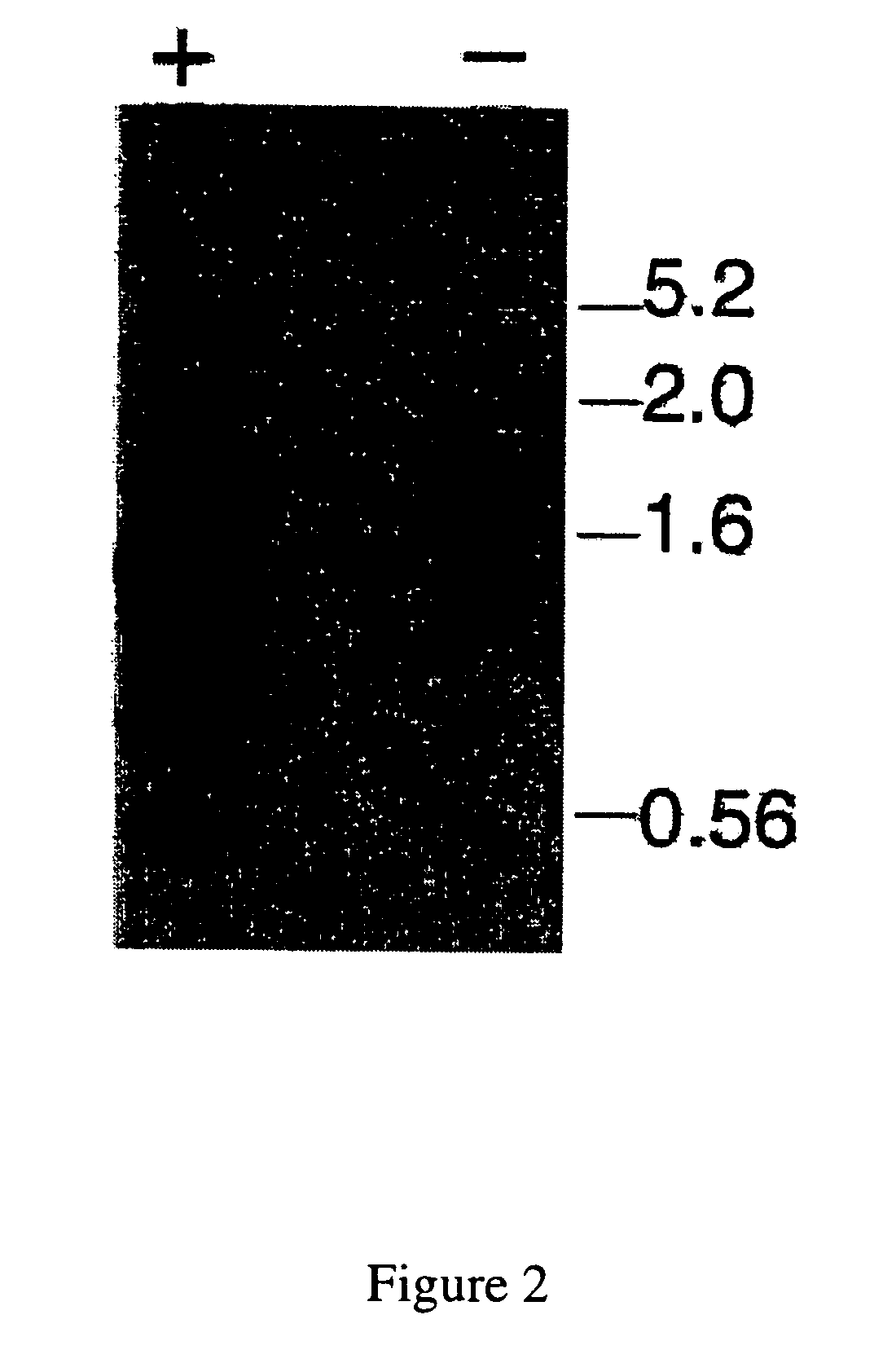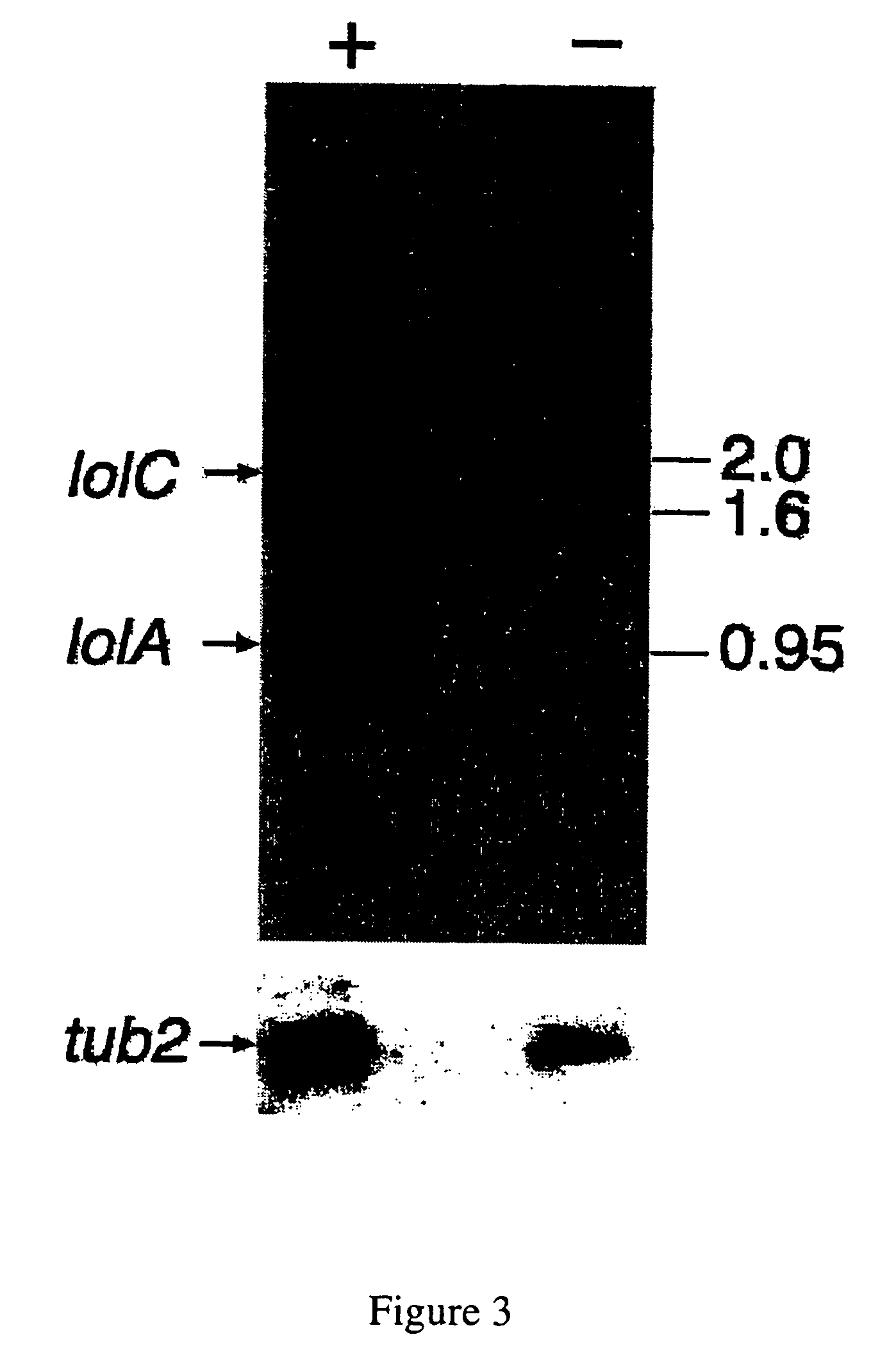Loline alkaloid gene clusters of the fungal endophyte neotyphodium uncinatum
a technology of neotyphodium uncinatum and alkaloid gene clusters, which is applied in the field of alkaloids and alkaloid biosynthesis, can solve the problem of little knowledge of la biosynthesis
- Summary
- Abstract
- Description
- Claims
- Application Information
AI Technical Summary
Benefits of technology
Problems solved by technology
Method used
Image
Examples
example 1
[0055]All chemicals (including antibiotics) and reagents used in the experiments described in the examples below were obtained from Sigma Corp. (St. Louis, Mo., USA), unless indicated otherwise. Growth media were from Difco Laboratories (Detroit, Mich., USA). Agarose for DNA and RNA gel electrophoreses was supplied by Bio Whittaker Molecular Applications (Rockland, Me., USA). For routine PCR of templates 1.0 kb were performed with the Advantage cDNA PCR Kit (Clontech, Palo Alto, Calif., USA).
Fungal Cultures and Analyses of Loline Alkaloids.
[0056]Mycelium of Neotyphodium uncinatum (voucher specimen CBS 102646 at Centraalbureau Voor Schimmelcultures, Utrecht, The Netherlands) was isolated from grass leaf tissues [meadow fescue (Lolium pratense=Festuca pratensis), plant 167 in our plant collection] on potato dextrose agar as previously described (Blankenship et al., 2001). The following procedures were carried out as described by Blankenship et al. (2001) with modifications. After 21 d...
example 2
Transcripts Up-Regulated in Loline Alkaloid-Producing Cultures.
[0070]To gauge the success of the suppression subtractive hybridization, and to get an overview of the number and sizes of cDNAs potentially enriched by the subtraction, cDNA-based northern analysis on total cDNA from the cultures were conducted (FIG. 2). The subtracted cDNAs hybridized much more strongly with total cDNA from the LA-producing cultures than to total cDNA from the suppressed cultures, demonstrating enrichment of cDNAs up-regulated in the LA-producing cultures. Multiple sizes of cDNAs hybridized with the subtracted cDNAs, indicating up-regulated expression of several different genes in the LA-producing cultures.
[0071]The λTriplEx2 library created with complete cDNA from LA-producing cultures contained a total of 4.1×106 primary pfu. From this, 1.5×106 primary pfu, likely representing the complete cDNA population obtained from the LA-producing cultures, were amplified to 5.4×109 pfu ml−1.
[0072]The number of ...
example 3
Several Subtracted cDNA Similarities with Database Sequences.
[0073]Twenty clones from the subtracted EST bank, and six library clones hybridizing to total subtracted cDNA were sequenced. In the suppression subtractive method incomplete suppression can result from amplification of tester-tester hybrids which have only one of the two adaptors at each end. However, all ESTs sequenced from the bank of subtracted cDNAs had the two different adaptors at their ends, indicating that contaminating background due to non-specific amplification of tester was very low.
[0074]Sequences of subtracted cDNA clones, as well as inserts in library clones that hybridized to subtracted cDNAs, were used to query databases by various BLAST algorithms. For several subtracted cDNAs (Table 1) and cDNAs from the λ-library (Table 2), matches to known protein sequences in NCBI, or sequences in the Ns. crassa database were identified. Five library and subtracted clones had significant similarity to the C-terminal ...
PUM
| Property | Measurement | Unit |
|---|---|---|
| total volume | aaaaa | aaaaa |
| pH | aaaaa | aaaaa |
| pH | aaaaa | aaaaa |
Abstract
Description
Claims
Application Information
 Login to View More
Login to View More - R&D
- Intellectual Property
- Life Sciences
- Materials
- Tech Scout
- Unparalleled Data Quality
- Higher Quality Content
- 60% Fewer Hallucinations
Browse by: Latest US Patents, China's latest patents, Technical Efficacy Thesaurus, Application Domain, Technology Topic, Popular Technical Reports.
© 2025 PatSnap. All rights reserved.Legal|Privacy policy|Modern Slavery Act Transparency Statement|Sitemap|About US| Contact US: help@patsnap.com



